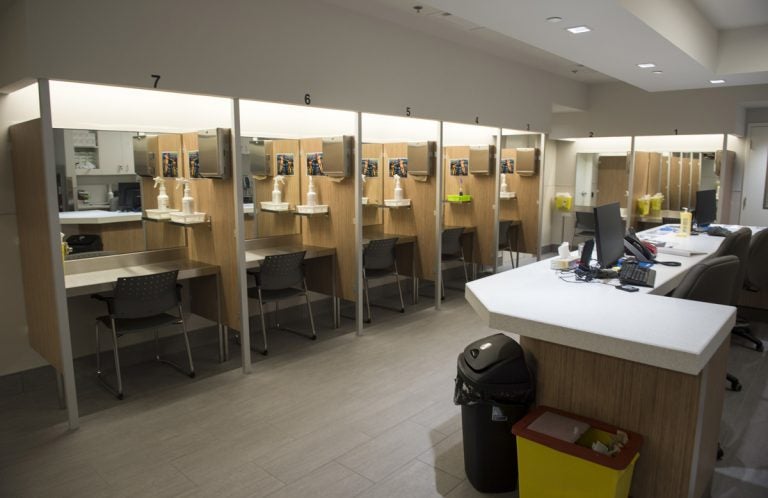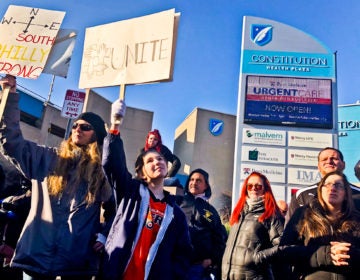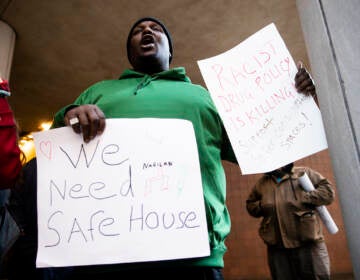Mapping project to assess best, worst locations for Philly safe-injection site
As Philadelphia mulls opening what could be the nation’s first safe-injection site, questions swirl about its location. Researchers are trying to figure that out.

Booths line the Cactus safe-injection site where drug addicts can shoot up using clean needles, get medical supervision, and freedom from arrest in Montreal. (Paul Chiasson/The Canadian Press via AP)
Location, location, location.
That is one of the most pressing and controversial questions swirling as Philadelphia mulls opening what could be the nation’s first safe-injection site. Amid the concerns and debate, researchers already have started mapping and evaluating what might make the best — or the worst — spots for a site where people can use drugs under medical supervision and gain access to treatment.
“Imagine laying down a grid across the city of thousand-foot by thousand-foot squares,” said Douglas Wiebe, an epidemiologist and director of the University of Pennsylvania’s Injury Science Center. “In each of those squares, we want to look at it and think about what is in that area that may make it a good place or a place that is not well-suited for a safe-injection facility.”
Wiebe, along with Sara Solomon and the Center for Public Health Initiatives, recently received a small university grant to bring together researchers and community members to assess all the possibilities, down to the street corner. For him, that means applying long-held epidemiology techniques to mapping everything from places with high rates of overdose deaths to narcotics arrests.
His team is drawing on about a dozen criteria to rate locations.
Is it near a SEPTA stop? That would be a plus.
“Then, there would also be criteria that we would want to avoid,” said Weibe. “Are there schools nearby? And so, basically, when we look at each cell, you can score it and give it plus figures for the number of features that are positive attributes, and then also negative features that would reduce their score.”
Those behind efforts to create a safe-injection site in Philadelphia stress that for it to work — to reduce deaths and to improve health of people and neighborhoods — a site would have to be accessible for people who are already using drugs. But opponents worry such sites won’t solve the problem, potentially making neighborhoods a deeper draw for drug use and crime. Meanwhile, serious legal concerns still loom.
Weibe hopes to present the findings of the mapping project to the city within the next couple months. But in the process of assessing potential locations, he said, the opinions of neighbors, people who use drugs and others will also factor into those scores.
“We want to expand the net of people that we include in this conversation, including members of different communities,” said Weibe, “and contribute to what we are trying to put forward as a bit of guidance for the city, to help them on making decisions where to site a safe-injection facility.”
WHYY is your source for fact-based, in-depth journalism and information. As a nonprofit organization, we rely on financial support from readers like you. Please give today.




